Controverscial.Com
![]()
Welcome
![]()
|
Controverscial.Com
Welcome
|
|
|
Controverscial.Com
Welcome
|




The Elder tree (Sambucus nigra) is a member of the Honeysuckle family and is one of the sacred trees of Wicca and Witchcraft. According to the Celtic Tree Calendar, the Elder is the thirteenth tree of the year and dates from the 25th November – 22nd December, as such the Elder tree is associated with Yule - the Winter Solstice, which generally occurs around the 21st December.
The word Elder is derived from an old Anglo-Saxon word ‘aeld’ meaning fire, an association given to the Elder because of its use. The soft pith of an Elder branch pushes out easily and the tubes formed were once used as pipes for blowing up fires, later bellows were made from Elder for the same use. From this followed the folk names Pipe-Tree, Bore-tree or Bour-tree, the latter is still being used in Scotland and is traceable to the Anglo-Saxon term Burtre. Other early names include Eldrun or Ellhorn, and then later in the fourteenth century it became known as Hyldor or Hyllantree. In Germany it is known as Hollunder.
The botanical name for the Elder - ‘Sambucus’, occurs in the writings of Pliny and other ancient writers. Adopted from the Greek word ‘Sambuca’, a musical instrument much favoured and used by the Romans, it is thought that Elder wood was used in its construction due its hardness. There is difficulty in accepting this however, because the Sambuca was a stringed instrument, while anything made from Elder would most likely have been a wind instrument similar in the nature to Panpipes, a Flute or even a Sackbut, the renaissance equivalent to the modern trombone.
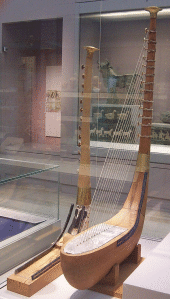
Pliny also records the belief held by country folk that the “shrillest pipes” and the most “sonorous horns” were made from Elder trees, but only those grown in areas away from human habitation and away from the sound of a cocks-crow. Young children would make whistles, popguns and peashooters from the Elder, which Pliny notes: "were manufactures many centuries old". Culpepper another old master declared: “It is needless to write any description of the Elder, since every boy that plays with a popgun will not mistake it for any another tree”. In modern time’s, Italian peasants construct a simple musical pipe from the Elder called a ‘Sampogna’.
In the summer with its flat-topped masses of fragrant white blossoms, followed later in autumn by drooping bunches of purple-black berries; the Elder is a familiar and much loved sight in the English countryside. It grows in abundance with a minimum of soil and can be found in wastelands, woods, hedgerows and gardens. Mostly the Elder grows as a shrub, bush or small tree, and rarely exceeds nine metres (30ft) in height. Wild in nature the Elder re-grows damaged branches with ease and can root rapidly from any of its parts. Cuttings or twigs broken of the tree and stuck in the ground will soon produce masses of fruit.
A peculiarity of the Elder is its method of growth. At the base of a sapling, stems appear each growing upright, then after awhile as if under weight they bend over creating a curve on top of which a new bud appears. From this bud a new stem grows upright for a while until it too bends over and so its growth continues. The Elder’s trunk therefore is not formed by one upwardly growing mass like the trunks of other trees, but is a patchwork mess of curving drooping stems. This is why the Elder is neither elegant nor reaches any great height. The stems can sometimes reach nearly two feet in diameter, a size indicating several or more score of years, today however we are lucky to be able to find one growing half that size.
The bark of the wood is rough, corky and light brown to grey in colour, its branches are smoother and its twigs a pleasing bright green, but these are pot-marked with small brownish spots caused by the tree’s lenticels. The wood of the main stem is hard and heavy, white with a fine close grain. It is easy to cut and polishes well, and was often used for making butchers skewers or small toys for children. Other uses include shoemaker’s pegs, fishing rods, and needles for weaving nets and combs. It being a hard wood, technical instruments and several different musical instruments were made of Elder. The pith from its branches was sliced and used as floats for fishing, while pith from younger stems being exceedingly light, was cut into balls and used for electrical experiments. In medicine, it was used to hold small objects for microscopic sectioning.

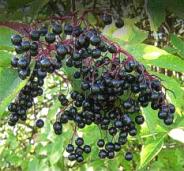
The leaves of the Elder consist of five leaflets attached to a central stalk sitting opposite each other on its twigs or branches. To ensure its leafing capacity, beneath its main leaf-buds the Elder produces a second smaller bud in reserve, but this will only open if the main leaves are lost due to inclement weather, and can remain dormant for a couple of years until needed. Once the leaves have formed, its flower buds begin to grow and by June the tree is awash with thousands of tiny white flowers.
The flowers all look alike and consist of five creamy white petals, on the back of which five green sepals form a star. In between each petal there are five yellow stamens surrounding a cream coloured ovary containing a three lobed stigma. To allow easy cross-fertilization by flies and bees, and other insects attracted by the flowers fragrance, the stamens and stigmas mature at the same time. Clusters of Elder flowers grow all at the same level facing the sky and viewed from beneath resemble many tiny star-spoked umbrellas.
There is much folklore and superstition talked about the Elder tree, much of it passed down through the old religions of the ancients, and in common with many other trees and plants, the Elder tree in particular was attributed a number of negative Christian legends in efforts to suppress earlier pagan beliefs. One such legend as Shakespeare recounts in his “Love's Labour Lost”, is that of the traitor Apostle “Judas Iscariot” supposedly hanged himself on an Elder tree. Reference to this myth is found as far back in English literature as Langland’s – “Vision of Piers Plowman” written during the middle of the fourteenth century: “Judas he japed with Jewen silver, And sithen an eller hanged hymselve”.
Why Judas would have selected the Elder for his gallows, is somewhat puzzling given the small size of the tree, but Sir John Mandeville in his famous book published in the 1300’s - “The Travels of Sir John Mandeville”, tells us that he was shown: “faste by the Pool of Siloam, the identical Tree of Eldre that Judas henge himself upon, for despeyr that he hadde, when he solde and betrayed oure Lord”. John Gerard in his famous “Herbal or General History of Plants” calls the Elder tree, “the Judas-tree - the tree whereon Judas did hange himselfe”.

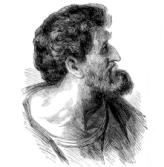
Another old legend tells of how the Elder tree was one of several trees whose wood was used to make the "Cross of Calvary" on which Christ was crucified, and as a result the Elder tree in particular was punished, an old couplet states: “Bour tree - Bour tree: crooked rong, Never straight and never strong; Ever bush and never tree, Since our Lord was nailed on thee”.
In most countries, the Elder tree is intimately connected with magic and witchcraft, and there are many folktales and legends telling of a Witch that live in the tree. One such is about Hylde-Moer, the Elder-tree Mother, who lived in the tree to watch over it. Should the tree be cut down and furniture made of its wood, many believed she would follow and haunt the owners. As the story goes, an ignorant woodcutter once cut down an Elder tree to make a cradle for his newborn son, but each time the child was placed in it, Hylde-Moer would appear and pull the child's legs, thus allowing it no peace until it was lifted out. To cut an Elder permission must always be gained first by asking, and not until Hylde-Moer has given consent by remaining silence, may the tree be cut down.
Another legend about an Elder Witch concerns the famous Rollright Stone circle near the village of Long Compton in Oxfordshire. These strange and ancient monoliths are said to be the remains of an invading Danish King and his men intent on conquering England. As the King and his men were approaching Long Compton, an old hag Witch approached them and called out a challenge: “Seven long strides shalt thou take, an if Long Compton thou can see, King of England thou shalt be”.
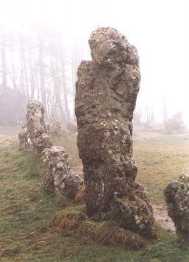

As with most trees, one of the main properties of the Elder is that of protection, and when located near to the home, helps to protect it from negative energy and lightning attacks. Crosses made of Elder twigs were hung over stables and barns to protect the livestock. People buried objects, items of clothing and even their milk teeth in its shade, to protect the owner from evil spells and disease. Spells were also used to divert illnesses from a sick person into the Elder bush. Pieces of Elder wood worn close to the body will protect against illness, however many people still believed it was dangerous to place Elder in a cradle, fear was that the tree fairies would see this as a sign they could take the child away.
Elder trees can commonly be found growing in old country gardens and cemeteries, for wherever the Elder tree grew was considered sacred space protected by the Elder Mother. The flowers of tree have a slightly narcotic smell and it is considered unwise to rest under it too long, for if you fall asleep you may never wake up. Because of this the Elder has a long association with death. The dead were often laid out on Elder branches and its wood was used to make crosses for graves. In some countries branches of Elder are still put on graves today, and if they sprout, it is a clear sign that the departed person is happy and has been welcomed into Elysium, the blessed realm of the dead.
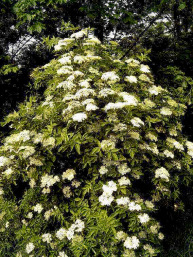
If you bathe your eyes with dew collected from the Elder tree, you will be able to see fairies and witches. In the Isle of Man, Elder trees are the main dwelling-place for elves, and in Scotland if you stand under an Elder-tree at Samhain, you can see the fairy host riding by. Scattering Elder leaves in the four winds will bring protection and when used to form a circle, helps to create sacred space. During ritual a flute or whistle made from an Elder can be used to summon spirits.
The Elder has long been noted
for its healing properties and was mentioned in the oldest of British
Pharmacopoeia’s. To the physician
and the wise-woman of old, it was considered to be “the medicine chest of the
country” to those who knew its secrets. Most
all parts of the Elder were used in drinks, healing poultices and ointments.
John Evelyn (1620–1706)
a prolific English writer, gardener and diarist wrote in praise of the
Elder, saying:
“If
the medicinal properties of its leaves, bark and berries were fully known, I
cannot tell what our countryman could ail for which he might not fetch a remedy
from every hedge, either for sickness or wounds.
The buds boiled in water gruel have effected wonders in a fever, the
spring buds are excellently wholesome in pottages; and small ale in which Elder
flowers have been infused is esteemed by many so salubrious that this is to be
had in most of the eating houses about our town”.
Nicholas Culpeper (1616-1654)
popularly regarded as the father of alternative medicine, states in his books:
The English Physician (1652) and The Complete Herbal (1653) that:
“The
first shoots of the common Elder, boiled like Asparagus, and the young leaves
and stalks boiled in fat broth, doth mightily carry forth phlegm and choler. The
middle or inward bark boiled in water and given in drink worketh much more
violently; and the berries, either green or dry, expel the same humour, and are
often given with good success in dropsy; the bark of the root boiled in wine, or
the juice thereof drunk, worketh the same effects, but more powerfully than
either the leaves or fruit. The juice of the root taken causes vomitings and
purgeth the watery humours of the dropsy”.
Sir Thomas Browne (1605-1682)
another noted English physician and writer tried to reconcile religion with
scientific knowledge, in his Religio medici (1643) he states:
“The
common people keep as a good secret in curing wounds the leaves of the Elder,
which they have gathered the last day of April.
The leaves boiled soft with a little linseed oil were used as a healing
application to piles. An ointment
concocted from the green Elderberries with camphor and lard, was formerly
ordered by the London College of Surgeons to relieve the same complaint.
The leaves are an
ingredient of many cooling ointments: Here
is another recipe, not made from Elder leaves alone, and very much recommended
by modern herbalists as being very cooling and softening and excellent for all
kinds of tumours, swellings and wounds: Take
the Elder leaves 1/2 lb., Plantain leaves 1/4 lb., Ground Ivy 2 oz., Wormwood 4
oz. (all green); cut them small and boil in 4 lb. of lard in the oven, or over a
slow fire; stir them continually until the leaves become crisp, then strain and
press out the ointment for use”.
John
Gerard (1545-
1612) in perhaps the most famous
of the English herbals “Herbal or General History of Plants” first
published in 1597 and republished in 1633, states that:
“The
jelly of the Elder otherwise called Jew's ear, taketh away inflammations of the
mouth and throat if they be washed therewith, and doth in like manner help the
uvula”.
Jew’s Ear (Hirneola auricula Judae), is a large fungus that can often be found growing on the Elder tree. The name is a corruption of “Judas’s ear”, from the association that Judas hanged himself on the Elder. Purplish in colour, it resembles the shape and softness the human ear, and although it sometimes occurs on Elm trees, it grows almost exclusively on Elder trees particularly in damp and shady places.




The leaves of the Elder when
bruised and worn in the rim of a hat or rubbed on the face will distract flies
from settling on the person. To
protect the skin from midges and mosquitoes, make an infusion from the leaves
and dab it on the skin. Gather a
few fresh leaves from the Elder and tear them from their stalks, place them in a
jug and pour on boiling water, cover and leave for a few hours.
When the infusion is cold, it is fit for use, pour off into a bottle and
keep it tightly corked, a fresh infusion should be made often.
Farmers particularly value
the leaves of the Elder, which when spread about around barns and granaries
deter mice and moles away from their usual haunts.
Sheep and other farm animals can be cured of foot rot from a
decoction of the bark and young shoots. The
bark and roots of an old Elder tree was used in the Scotch Highlands as an
ingredient for a black dye. The
leaves mixed with alum also produce a green dye, and the berries a blue and
purple dye.
Elder Flowers
and Berries have
long been used in the English countryside for making homemade drinks and
preserves, and are just as popular today as they were in the times of our
great-grandmothers. The berries
make an excellent homemade wine and winter cordial, which improves with age.
Taken hot with sugar just before going to bed, was an old-fashioned and
well-established cure for the common cold.
Gender - Feminine.
Planet - Saturn.
Element - Water.
God and Goddess -
Lugh,
Dagda,
Diancecht,
Nuada
- Airmid,
Banba, Etain,
Macha,
Druantia and Áine.
Magical associations -
Exorcism, Protection, Healing, Prosperity, Sleep and Death.
Astrologically, Elder people
have a tie to the White goddess. They
are very similar to Rowan people. They
are very musically inclined and gifted. Most
Elder people will be water people as well, having water as their element or even
associated with their astrological birth sign.
They are excellent healers but need to be careful not to use their gifts
to sway other people's wills and choices. They
are also excellent seers.
![]()
Cunningham's Encyclopedia Of Magical Herbs - By Scott Cunningham.
Encyclopedia of Wicca & Witchcraft - By Raven Grimassi.
The Encyclopedia of Witches & Witchcraft - By Rosemary Ellen Guiley.
Tree Wisdom (The difinitive guidebook to the myth, folklore and healing power of Trees) - By Jacqueline Memory Paterson.
AA Book of Britain's Countryside.
The Penguin Hutchinson Reference Library (CD cassette).
Microsoft Encarta Encyclopedia (CD cassette).
First published in 2002 - Updated the Dec 2008 © George Knowles
![]()
![]()

Best Wishes and Blessed Be.
Let there be peace in the world - Where have all the flowers gone?
My Personal Page / My Place in England, UK / My Family Tree (Ancestry)
Wicca/Witchcraft / What is Wicca / What is Magick
Traditional Writings:
Wiccan Rede / Charge of the Goddess / Charge of the God / The Three-Fold Law (includes The Law of Power and The Four Powers of the Magus) / The Witches Chant / The Witches Creed / Descent of the Goddess / Drawing Down the Moon / The Great Rite Invocation / Invocation of the Horned God / The 13 Principles of Wiccan Belief / The Witches Rede of Chivalry / A Pledge to Pagan Spirituality
Correspondence Tables:
Incense / Candles / Colours / Magickal Days / Stones and Gems / Elements and Elementals
Traditions Part 1 - Alexandrian Wicca / Aquarian Tabernacle Church (ATC) / Ár Ndraíocht Féin (ADF) / Blue Star Wicca / British Traditional (Druidic Witchcraft) / Celtic Wicca / Ceremonial Magic / Chaos Magic / Church and School of Wicca / Circle Sanctuary / Covenant of the Goddess (COG) / Covenant of Unitarian Universalist Pagans (CUUPS) / Cyber Wicca / Dianic Wicca / Eclectic Wicca / Feri Wicca /
Traditions Part 2 - Gardnerian Wicca / Georgian Tradition / Henge of Keltria / Hereditary Witchcraft / Hermetic Order of the Golden Dawn (H.O.G.D.) / Kitchen Witch (Hedge Witch) / Minoan Brotherhood and Minoan Sisterhood Tradition / Nordic Paganism / Pagan Federation / Pectic-Wita / Seax-Wica / Shamanism / Solitary / Strega / Sylvan Tradition / Vodoun or Voodoo / Witches League of Public Awareness (WLPA) /
Gods and Goddesses (Greek
Mythology) / Esbats &
Full Moons / Links
to Personal Friends & Resources / Wicca/Witchcraft
Resources / What's a spell? /
Circle Casting and
Sacred Space / Pentagram
- Pentacle / Marks
of a Witch / The Witches
Power / The Witches Hat
/ An
esoteric guide to visiting London / Satanism
/ Pow-wow
/ The
Unitarian Universalist Association / Numerology: Part 1
/ Part 2 / Part
3 / A
history of the Malleus Maleficarum: includes: Pope
Innocent VIII /
The
papal Bull /
The
Malleus Maleficarum /
An extract from the Malleus Maleficarum
/ The letter of approbation
/ Johann
Nider’s Formicarius /
Jacob
Sprenger /
Heinrich Kramer /
Stefano Infessura
/ Montague Summers /
The Waldenses
/ The Albigenses
/
The Hussites / The
Sun Dance
/ Shielding (Occult
and Psychic Protection) /
Sabbats in History and Mythology / Samhain (October 31st) / Yule (December 21st) / Imbolc (February 2nd) / Ostara (March 21st) / Beltane (April 30th) / Litha (June 21st) / Lughnasadh (August 1st) / Mabon (September 21st)
Rituals contributed by Crone: Samhain / Yule / Imbolc / Ostara / Beltane / Litha / Lammas / Mabon
Tools of a Witch / The Besom (Broom) / Poppets and Dolls / Pendulums / Cauldron Magick / Mirror Gazing
Animals in Witchcraft (The Witches Familiar) / Antelope / Bats / Crow / Fox / Frog and Toads / Goat / Honeybee / Kangaroo / Lion / Owl / Phoenix / Rabbits and Hares / Raven / Robin Redbreast / Sheep / Spider / Squirrel / Swans / Wild Boar / Wolf / Serpent / Pig / Stag / Horse / Mouse / Cat
In Worship of Trees - Myths, Lore and the Celtic Tree Calendar. For descriptions and correspondences of the thirteen sacred trees of Wicca/Witchcraft see the following: Birch / Rowan / Ash / Alder / Willow / Hawthorn / Oak / Holly / Hazel / Vine / Ivy / Reed / Elder. Also see: The Willow Tree (Folk Music)
Mystical Sacred Sites - Stonehenge / Glastonbury Tor / Malta - The Hypogeum of Hal Saflieni / Avebury / Cerne Abbas - The Chalk Giant / Ireland - Newgrange /
Rocks and Stones:
Stones - History, Myths and Lore
Articles contributed by Patricia Jean Martin: / Apophyllite / Amber / Amethyst / Aquamarine / Aragonite / Aventurine / Black Tourmaline / Bloodstone / Calcite / Carnelian / Celestite / Citrine / Chrysanthemum Stone / Diamond / Emerald / Fluorite / Garnet / Hematite / Herkimer Diamond / Labradorite / Lapis Lazuli / Malachite / Moonstone / Obsidian / Opal / Pyrite / Quartz (Rock Crystal) / Rose Quartz / Ruby / Selenite / Seraphinite / Silver and Gold / Smoky Quartz / Sodalite / Sunstone / Thunderegg / Tree Agate / Zebra Marble
Wisdom:
Knowledge vs Wisdom by Ardriana Cahill / I Talk to the Trees / Awakening / The Witch in You / A Tale of the Woods
Articles and Stories about Witchcraft:
Murder by Witchcraft / The Fairy Witch of Clonmel / A Battleship, U-boat, and a Witch / The Troll-Tear (A story for Children) / Goody Hawkins - The Wise Goodwife / The Story of Jack-O-Lantern / The Murder of the Hammersmith Ghost / Josephine Gray (The Infamous Black Widow) / The Two Brothers - Light and Dark
Old Masters of Academia:
Pliny the Elder / Hesiod / Pythagoras
Abramelin the Mage / Agrippa / Aidan A. Kelly / Albertus Magnus “Albert the Great” / Aleister Crowley “The Great Beast” / Alex Sanders "the King of the Witches” / Alison Harlow / Amber K / Anna Franklin / Anodea Judith / Anton Szandor LaVey / Arnold Crowther / Arthur Edward Waite / Austin Osman Spare / Biddy Early / Bridget Cleary / Carl Llewellyn Weschcke / Cecil Hugh Williamson / Charles Godfrey Leland / Charles Walton / Christina Oakley Harrington / Damh the Bard (Dave Smith) / Dion Fortune / Dolores Aschroft-Nowicki / Dorothy Morrison / Doreen Valiente / Edward Fitch / Eleanor Ray Bone “Matriarch of British Witchcraft” / Dr. John Dee and Edward Kelly / Dr. Leo Louis Martello / Eliphas Levi / Ernest Thompson Seton / Ernest Westlake and the Order of Woodcraft Chivalry / Fiona Horne / Friedrich von Spee / Francis Barrett / Gerald B. Gardner / Gavin and Yvonne Frost and the School and Church of Wicca / Gwydion Pendderwen / Hans Holzer / Helen Duncan / Herman Slater "Horrible Herman" / Israel Regardie / James "Cunning" Murrell / Janet Farrar & Gavin Bone / Jessie Wicker Bell “Lady Sheba” / John Belham-Payne / John George Hohman / John Gerard / John Gordon Hargrave (the White Fox) / John Michael Greer / John Score / Johannes Junius the Burgomaster of Bamberg / Joseph John Campbell / Karl von Eckartshausen / Laurie Cabot "the Official Witch of Salem" / Lewis Spence / Margaret Alice Murray / Margot Adler / Marie Laveau the " Voodoo Queen of New Orleans" / Marion Weinstein / Matthew Hopkins “The Witch-Finder General” / Max Ehrmann and the Desiderata / Monique Wilson the “Queen of the Witches” / Montague Summers / Nicholas Culpeper / Nicholas Remy / M. R. Sellers / Mrs. Grieve "A Modern Herbal" / Oberon and Morning Glory Zell-Ravenheart / Old Dorothy Clutterbuck / Old George Pickingill / Paddy Slade / Pamela Colman-Smith / Paracelsus / Patricia Crowther / Patricia Monaghan / Patricia “Trish” Telesco / Philip Emmons Isaac Bonewits / Philip Heselton / Raymond Buckland / Reginald Scot / Robert Cochrane / Robert ‘von Ranke’ Graves and "The White Goddess" /
Rudolf Steiner / Rosaleen Norton “The Witch of Kings Cross” / Ross Nichols and The Order of Bards, Ovates & Druids / Sabrina - The Ink Witch / Scott Cunningham / Selena Fox / Silver Ravenwolf / Sir Francis Dashwood / Sir James George Frazer / S.L. MacGregor Mathers and the “Hermetic Order of the Golden Dawn” / Starhawk / Stewart Farrar / Sybil Leek / Ted Andrews / The Mather Family - includes: Richard Mather, Increase Mather, Cotton Mather / Thomas Ady / Vera Chapman / Victor Henry Anderson / Vivianne Crowley / Walter Brown Gibson / William Butler Yeats / Zsuzsanna Budapest
Many of the above biographies are brief and far from complete. If you know about any of these individuals and can help with aditional information, please cantact me privately at my email address below. Many thanks for reading :-)
While I have taken due care and dilligence to credit all sources where possible, this website may contain copyrighted material which has not been specifically authorized by the copyright owner. My use of making such material available here is done so in my efforts to advance our understanding of religious discrimination, the environmental and social justice issues etc. If you wish to use copyrighted material from this wedsite for purposes of your own then you must obtain permission from the relevant copyright owner yourself.
![]()
My online email discussion group:
http://groups.yahoo.com/group/Email_Witches

Help send a message of peace around the world! The Dove of Peace flies from site to site, through as many countries as possible. It does not belong to ANY belief system. Please help make a line around the globe by taking it with you to your site, by giving it to someone for their site, by passing it on to another continent or to the conflict areas of the world. May trouble and strife be vanquished in it's path.

mailto:George@controverscial.com
![]()
|
|